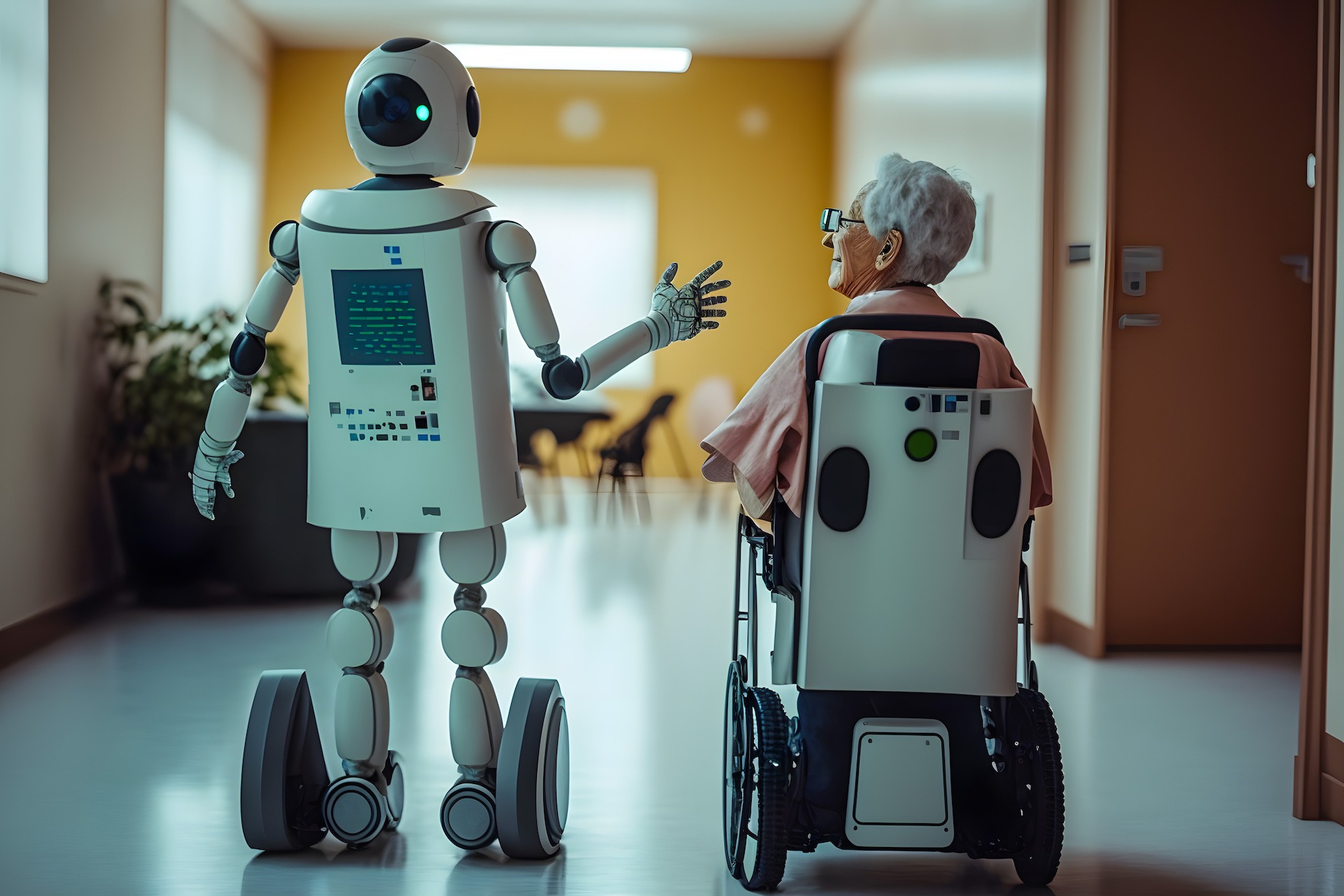In an era where customer service has become a key differentiator for businesses, smart robots are stepping into the spotlight, transforming the way companies interact with their customers. These AI-powered machines are not only reshaping the customer service landscape but are also setting new standards for efficiency, accuracy, and personalized service.
This article delves into the rise of smart robots in customer service, their benefits, the challenges they pose, and their potential to redefine the future of customer interactions.
Table of Contents
What are smart robots?
Smart robots are artificial intelligence (AI) systems that learn from their environment and experiences and build on their capabilities based on that knowledge. These robots, also referred to as cobots, can collaborate with humans, working alongside them, and learning from their behavior.
These machines are capable of taking actions and making decisions, which are influenced by the intelligence embedded within them through machine learning or deep learning, and the information they receive from their input sensors while in operation.
Smart robots come in various forms and serve different purposes. They can be personal robots, used in homes for assistance or companionship, or industrial robots used in manufacturing processes for tasks such as assembly, painting, or inspection. Some popular personal robots include Miko 3, EMO AI Desktop Pet, and Unitree Go1.
Despite their varied applications, all smart robots share a common trait: the ability to operate autonomously to a certain degree and adapt to new situations. This makes them particularly useful in dynamic environments where they can use their learning capabilities to improve their performance over time.
Application in Customer Service
One such area where Smart robots are making a significant impact is the customer service sector, offering numerous advantages for businesses and customers alike. Smart robots in customer service are becoming increasingly prevalent, offering a range of benefits for businesses and customers alike.
Here’s how they’re applied:
Chatbots:
One of the most common applications of smart robots in customer service is through chatbots. These AI-powered virtual assistants can field initial questions from customers visiting a business’s website, providing instant responses, and then channel these interactions toward human assistants when necessary.
A study found that 62% of consumers would prefer to use a customer service bot rather than wait for human agents to answer their requests. This preference is likely driven by the speed and convenience offered by chatbots.
Chatbots also have a broad reach, with over 3 million in use on Facebook Messenger alone2. As businesses increasingly recognize the benefits of chatbots, their adoption continues to grow. Notably, 36% of businesses use chatbots to generate more leads, and business leaders claim that, on average, chatbots improve sales by 67%.
24/7 Availability:
Unlike their human counterparts, smart robots don’t need breaks or sleep. This means they can offer round-the-clock customer service, ensuring that customers receive help whenever they need it.
Data Analysis:
Smart robots can gather and analyze vast amounts of customer data to provide personalized services. They can remember past interactions, understand customer preferences, and use this information to offer tailored recommendations. This collected information is then analyzed to deliver a customized customer experience. For instance, smart robots can recall past interactions to provide context for current inquiries or requests. They can also use customer preferences and behavior patterns to offer personalized recommendations, enhancing the customer’s journey and potentially boosting sales.
Efficiency:
Robots can handle multiple customer queries simultaneously, significantly reducing response times and increasing the efficiency of customer service operations. This fast and efficient data analysis can lead to more timely responses to customer queries and more effective problem resolution. In fact, businesses leveraging robotic process automation systems for data collection and customer service have reported significant improvements in efficiency.
Positive Customer Experiences:
Research indicates that most customers have a positive experience when dealing with service robots. The use of service robots also introduces an element of novelty and excitement for customers. Interacting with advanced technology can trigger emotions like joy and interest, adding to the positive experience.
Not Replacing Humans:
While AI and smart robots have significantly transformed the customer service landscape, they are not expected to fully replace human roles.
AI technology, particularly in the form of smart robots and chatbots, has indeed automated many aspects of customer service. They can handle repetitive tasks such as answering frequently asked questions or processing simple transactions, which allows human agents to focus on more complex issues. This, in turn, leads to increased efficiency and productivity.
However, AI is not poised to completely eliminate human involvement in customer service. There are several reasons for this. First, while AI can handle straightforward queries efficiently, it often falls short when dealing with more nuanced or complicated situations. Human agents still excel in areas requiring empathy, critical thinking, and complex problem-solving skills.
Secondly, customers often prefer human interaction for certain types of service or inquiries. Studies show that while customers appreciate the convenience of AI for simple queries, they still prefer human interaction when dealing with more complex issues or seeking personalized advice.
Lastly, the advent of AI in customer service is also changing the role of human agents. As AI takes over more routine tasks, human agents are transitioning to roles that require more advanced skills and expertise. For example, they may focus more on handling escalated issues, providing expert advice, or managing the AI systems themselves.
Conclusion
While AI and robotics are becoming increasingly prevalent in customer service, they are not expected to fully replace humans. Instead, they are reshaping the industry by automating routine tasks, increasing efficiency, and enhancing personalization and overall customer experience. However, this trend also presents potential challenges that need to be addressed. While these technologies offer significant benefits, it’s crucial to ensure they augment human roles effectively and safely, rather than seeking to replace them entirely. As we continue to navigate this wave of innovation, the focus should be on utilizing AI and robotics to enable humans to provide higher levels of service.






















Recent Comments